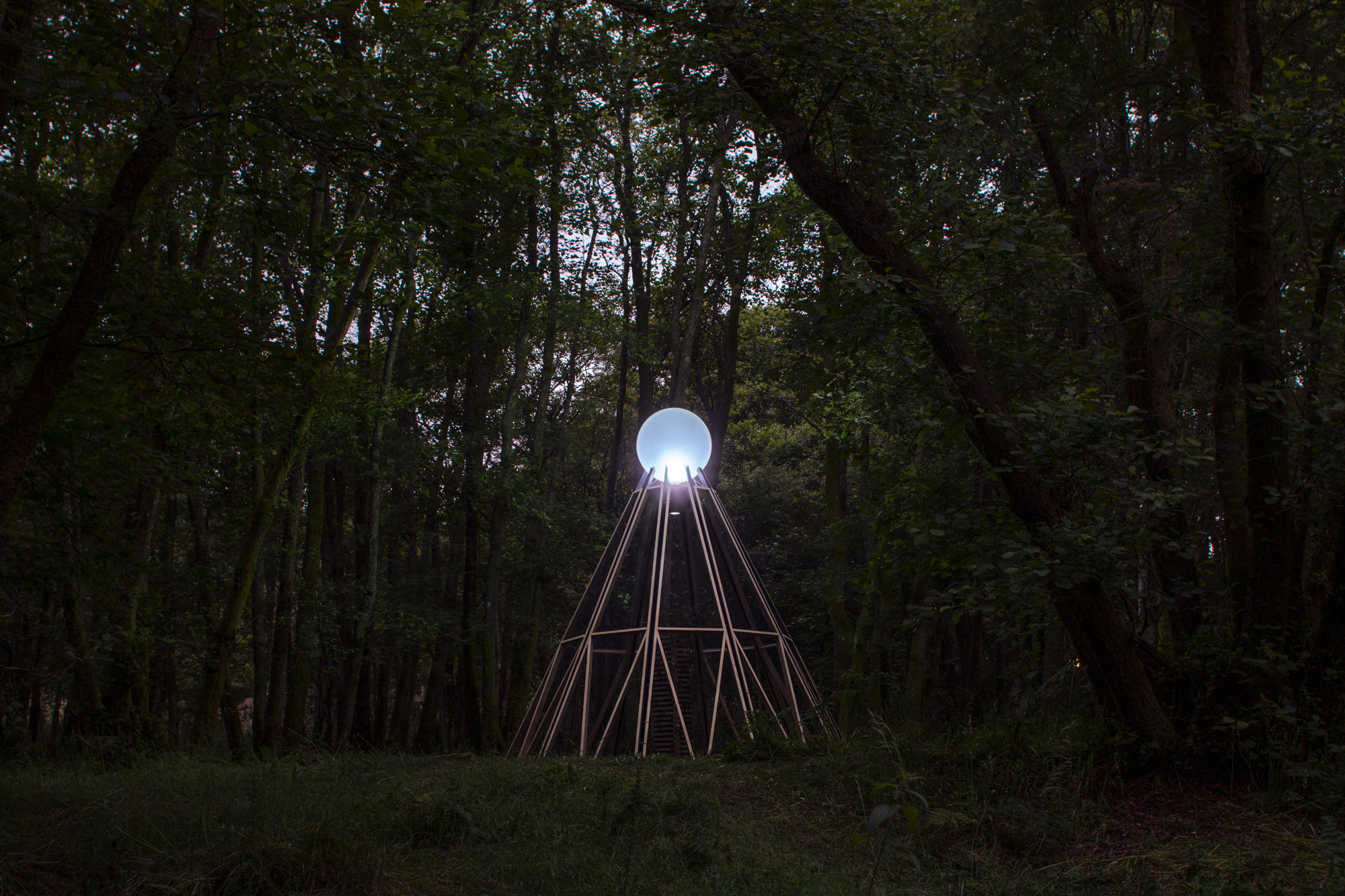Elephant
Hawk-Moth
Deilephila elpenor
—Feral

Moth Kota
As I tip the gold and fuchsia Elephant Hawk-moth slowly onto my hand, its wings remain folded, tuck-points touching its large abdomen, which is coloured by a thick brush stroke of deep pink. Compound eyes, great orbs protruding from either side of its head, are tinted green and darken toward the centre, each miniscule compartment just visible. The pink fur around its eyes radiates toward a tightly coiled proboscis.
Unloading a moth trap requires a gentle touch. Egg boxes are lifted slowly from the darkness and rotated in the sunlight to reveal moths and other insects nestling in their recesses. Luke, Assistant Warden at RSPB Loch Lomond, calls out the more familiar species as we work—‘Antler moth,’ ‘Drinker.’ Some are highly coloured like tropical birds. Others resemble faded tapestries with flaking scales creating bright bald patches around their crowns. We usher unidentified moths into clear plastic containers, comparing wings, antenna, abdomen, and underside patternation to intricate scale drawings within the field guide.
I study the detail of observational distinctions: minute kidney marks, faint pointillist bars, barely perceptible differences in colour saturation and wing curvature. The closest comparison I have for this level of scrutiny is time spent condition-checking artwork, noting and plotting individual grains of dust, or an eyelash caught within a frame.
Sitting with the Elephant Hawk-moth felt as if I was holding a hummingbird caught in suspension. I could appreciate the minute details of its form, tiny reactions to stimuli—quivering antennae and wing readjustments. Unlike any pinned specimen, this was the pulsing energy of life. Flight was possible at any point, and some took wing, corkscrewing overhead before veering away into the impenetrable bramble patches at the edge of the woodland. Gone.
Without a trap, moths and humans rarely come into direct contact. A lifecycle encompassing hard-to-observe metamorphosis doesn’t help. Nocturnal habits make encounters a rarity. A gardener might happen upon a lethargic sleeper nestled within undergrowth. Spectators at outdoor stadiums may notice a congregation beneath the floodlights. For many, contact is merely a household nuisance. Moths’ reputation as a fibre-hungry wardrobe-dweller clouds understanding and appreciation. Yet our existences are closely interwoven. A moth’s lifeworld is centred upon reciprocal relationships with botanical species, foodplant and pollinator, the impulse of reproduction, and orientation by moon and stars. Increasingly, these ancient lifeways are being disrupted by habitat destruction, rising global temperatures, and light pollution.
The moth trap is a portal to understanding this world, a device where the umwelts of humans and moths intersect, enabling a rare and intimate kind of multispecies encounter. Its ultraviolet rays prove irresistible to Lepidoptera. Specialists and amateurs learn careful and effective practices of attentiveness through the adjustment of equipment and the exercise of identification. However, a trap is a trap, and power resides with the trapper. Following my Elephant Hawk-moth encounter, I begin to reconsider moth trapping and the other objects associated with moth conservation and entomology. What would a new space of ethical encounter look like?
The Moth Kota, a site-specific sculpture for the Loch Lomond nature reserve, is my experimental response. The artwork is a space of encounter, designed to attract and engage humans and moths. The sculpture’s namesake, the Kota or Goahti (Northern Sámi), is a transient space of shelter and gathering. Its form also references objects associated with moth recording and the moon. Its surfaces are permeable, offering crevices of shelter among gathered pollen-rich and night-flowering foodplants. The artwork aims to extend the intimate encounters afforded to moth trappers, inviting new audiences and wider publics. It is, like the traditional moth trap, an object that instigates a feral encounter. However, the Moth Kota is also an object to think with, bringing jewel-like creatures into our orbit and asking us to engage in more polite forms of cohabitation.
Hannah Imlach
Visual artist and PhD researcher at the Loch Lomond Nature Reserve, Royal Society for the Protection of Birds & University of Edinburgh
—Glasgow, Scotland

